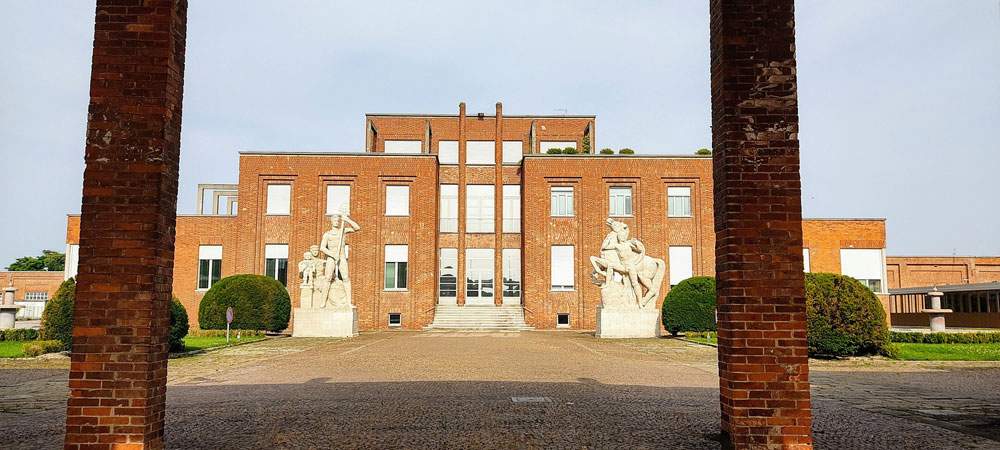Guided tours to discover Torviscosa, the factory town in Friuli Venezia Giulia
Built in the 1930s, Torviscosa, in Friuli Venezia Giulia, has the characteristics of regime architecture typical of towns born as a result of land reclamation in the Fascist period, but even its heavily factory-influenced urban organization reflects a division by functions and professional categories. A large red brick industrial plant and, closely connected to the latter, the factory town that was to house managers and workers of SNIA Viscosa.
The founding of this industrial town is mainly linked to the autarky that led SNIA Viscosa to seek a location to grow and process cane gentile, a wood substitute for producing cellulose that was essential for its textile productions. On this basis the factory is built, and on the latter in turn the surrounding countryside is organized to adapt it for cultivation. A new town is thus founded on the pre-existing small rural hamlet, which will be given the name Torviscosa.
The industrial enterprise of SNIA and the founding of the new town saw the presence of important names in culture and art: among them Leone Lodi who built the two monumental statues placed at the entrance to the plant, Filippo Tommaso Marinetti who wrote the Poem of Torre Viscosa, and Michelangelo Antonioni author of the famous documentary Seven reeds a dress.
PromoTurismoFVG is organizing guided tours of Torviscosa. On Aug. 22 at 10 a.m., the guided tour will include a tour of different places in the town with an expert guide who will take participants on a walk through the historic center to recount the stages of its development, intertwined with propaganda, industry, social problems, politics, and the environment. A tour through the CID Documentation Information Center (an ideal starting point to discover the history of this founding city of the 1930s and the industrial enterprise from which it originated), the fascist architecture of the metaphysical square, the organization of housing by professional categories and the large green spaces. Torviscosa has been called a foundation city, a factory city, and a garden city: different aspects intended to describe the town’s urban layout desired and built by SNIA Viscosa, starting in 1938. The guided tour, available in Italian and English, will last two hours and cost 10 euros per person (free with FVGcard).
On September 19, however, a guided tour will be held to discover the working-class villages of Torviscosa and Malisana, between industry and agriculture. The tour will include a visit to the historic center of Torviscosa to dwell on its urban organization by professional categories, a visit to the village for agricultural workers in Malisana, and the medieval church of the Immaculate Conception (normally closed to the public). The SNIA Viscosa settlement in Torviscosa was until the late 1960s an industrial and at the same time an agricultural experience: there were more than a thousand workers employed in the large factory in the capital, at least four thousand in the stables and agricultural work in the surrounding area, which was also organized with an industrial system. The hamlet of Malisana, of Roman origin, underwent a transformation in the twentieth century to become a village for agricultural workers, a unique case in Friuli Venezia Giulia. The planned duration of the entire guided tour is two hours, starting in Piazzale Franco Marinotti, in front of the industrial plant, and the cost per person is 10 euros (free with FVGcard).
Pictured is the entrance to the industrial plant. Ph.Credit Friuli Venezia Giulia Turismo
 |
| Guided tours to discover Torviscosa, the factory town in Friuli Venezia Giulia |
Warning: the translation into English of the original Italian article was created using automatic tools. We undertake to review all articles, but we do not guarantee the total absence of inaccuracies in the translation due to the program. You can find the original by clicking on the ITA button. If you find any mistake,please contact us.




























